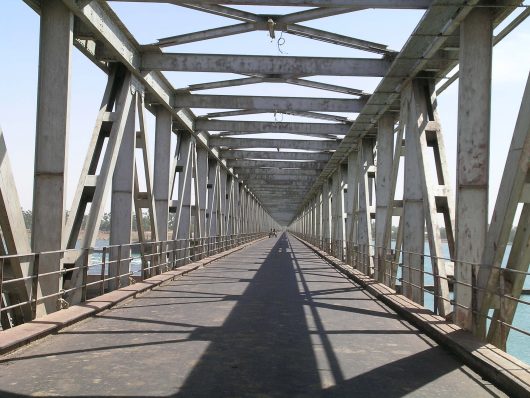Progress of Road Infrastructure in Mali Drives Development

Mali is the eighth largest country in Africa bordering Algeria, Niger, Mauritania, Guinea, Senegal, Cote d’Ivoire and Burkina Faso and is located in the North-Western region of the continent.
Infrastructure Development
Most of the population in Mali is concentrated in the southern area with mostly nomads inhabiting farther north. In the south, there is easier access to resources, agriculture and the market for buying/selling goods.
Infrastructure greatly reflects the accommodation to this geographic and demographic distribution. Road infrastructure in Mali is particularly keen on creating a network of connectivity between people, resources and export ports. This is why Mali has one of the most spatially concentrated infrastructure networks in the continent.
There are three international corridors that link landlocked Mali to the sea: Tema-Ouagadougou-Bamako, Dakar-Bamako and Abidjan-Ferkesessedougou-Bamako. These routes help bring Malian exports to central ports for shipping as well as interregional trade between other nations. Both of these help build the economy in Mali rather than keeping it as a self-reliant country struggling with poverty.
Local and Global Connectivity
The connectivity of road infrastructure in Mali has greatly improved local and global business prospects. For example, there is a transnational intercity highway known as Kankan-Kourémalé-Bamako that is the only way to enter and exit between Conakry (a port city in Guinea) and Bamako (the capital city of Mali). The African Development Bank Group highlights how this highway has “revolutionized the daily lives of thousands of people.” The highway has seen an increase in traffic for commuting workers who are now able to travel longer distances for better work. Traders set up their stalls along the highway and have seen a significant increase in customers and profits.
Mali does excellent work to maintain their roads, especially the significant highways and interregional methods of transport. Road infrastructure in Mali has guaranteed excellent safety for all users; in fact, a newly generated Road Authority has allowed for necessary maintenance throughout the year.
Despite inadequate funding, road infrastructure in Mali has been a highlighted priority to pave the way for economic growth. The nation’s government has directed much of its national funds toward maintenance and development of the overall road network, and as a result, Mali has set an excellent example for neighboring countries for how to diversify the economy by expanding transportation networks.
– Caysi Simpson
Photo: Flickr
